The Grow Monster knows water is an important element for any suburban garden to succeed. You need to get water to your garden in one of three ways: 1) wait for nature to rain on it, 2) bring it out using a watering can, or 3) delivering the water via a garden hose. Sometimes, waiting for rain or using a watering can are not practical options especially if you are in the middle of a drought, or you have a bigger garden where using a watering can is too time consuming.
This leaves watering the garden via a garden hose to be the best option. You need to connect the garden hose to your water source. There are many different types of garden hose faucet connectors. I have found there are 7 important points to consider when connecting a garden hose to an outdoor faucet.
Important Points to Consider When Connecting a Garden Hose to an Outdoor Faucet:
- Types of Garden Hose Faucet / Spigot Hose Bibs
- Garden Hose Faucet Handle Options
- Garden Hose Bib Connectivity options
- Garden Faucet / Spigot Hose Bib Connections on the House Side
- Garden Hose Faucet / Spigot Hose Bib Connections on the Garden Hose Side
- Garden Hose Faucet Adapters / Fittings / Connections / Couplers
- Attaching the Garden Hose: tips and tools
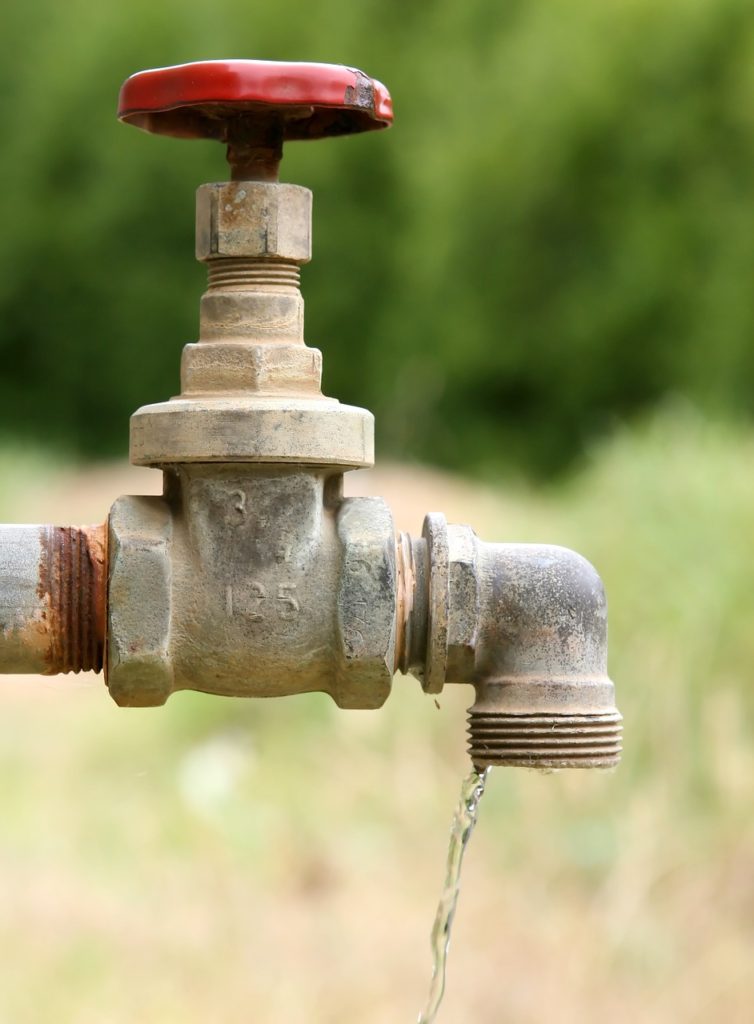
Types of Garden Hose Faucet / Spigot Hose Bib
The Grow Monster wondered what the difference was between a garden hose faucet and spigot, because the terms seem to be used interchangeably to describe the devices that control the flow of water coming from the house. The term faucet is the most common term used in the United States for indoor fixtures that allow you to turn the flow of water on and off. The term tap is also used commonly in British English as well as in the United States.
The term spigot is generally used by professionals to refer to the outdoor fixtures that allow you to turn the flow of water on and off. The term spigot comes from Middle English and was used to describe a wooden stopper. The wooden stopper was used back in the day to plug the hole in barrels containing liquids (e.g., wine, rum, whiskey).
Sometimes the outside spigot fixture is referred to as a sill cock or hose cock, which is usually a faucet that is installed at sill height (about 3 feet above ground level) outside a building. Now any faucet / spigot that has a threaded end for the attachment of a garden house could collectively be referred to as a hose bib.
The Grow Monster will continue to use the terms interchangeably as well to describe the outdoor fixture used to control the flow of water coming from the house. We can break the outdoor garden hose faucet/spigots out into one of two types:
| Faucets / Spigots that are Hose Bibs | Faucets / Spigots that are not Hose Bibs |
| Hose bibs are spigots that can accommodate a hose connection. They have a threaded connection (male end) that will enable a hose to connect to the spigot. These are the types of spigots you need on the outside of your home to connect a hose and most homes built today will have them installed. | These are spigots that do not accommodate for a hose connection. In other words, there are no threaded connections for a hose to connect to. You may see these on older homes. If you have a garden that requires water and the use of a hose, you want to avoid having these types of spigots on your home. Otherwise, you will be making many trips with the watering can to this type of spigot. If you have one currently installed, you can have a plumbing professional switch this spigot out with one that has a hose bib. |
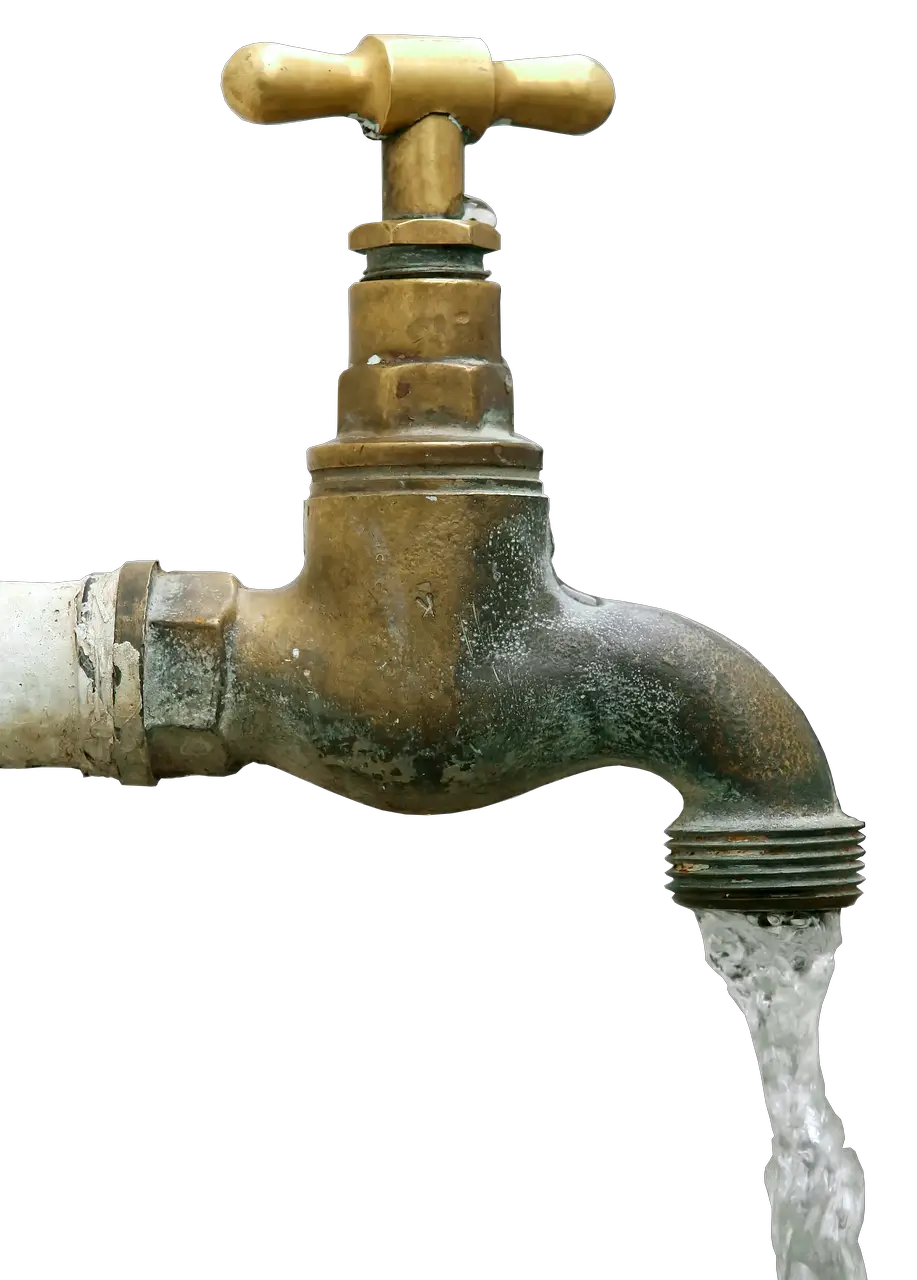 | 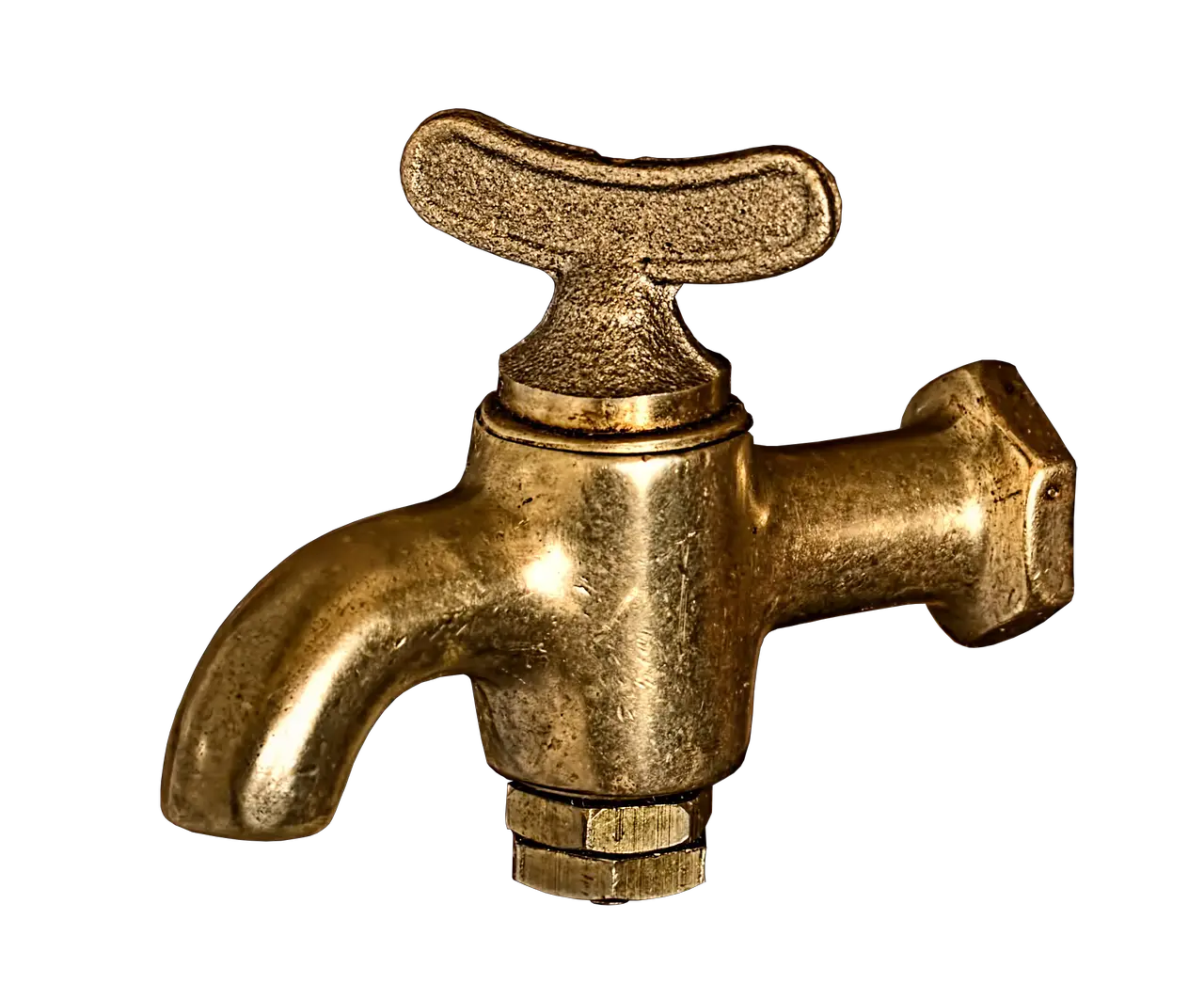 |
There are a few types of garden hose faucet / spigot hose bib designs to consider to connect a garden hose to an outdoor spigot. The table below provides the name, description, and picture of the faucet / spigot hose bib fixture for your consideration:
| FIXTURE NAME | FIXTURE DESCRIPTION | Image |
| Basic Compression Valve Faucets / Spigots | This fixture design is one of the oldest, simplest, least expensive AND the most commonly used design for controlling the flow of water from the house to the garden hose. This design is based on a screw stem system that raises either up or down depending on the direction in which the handle is turned. Screw stems may extend horizontal or vertical depending on the fixture design. At the end of the screw stem is a rubber compression washer that will open allowing the flow of water when the handle is turned counter-clockwise. When the handle is turned clockwise, the washer will compress against the inlet preventing the flow of water through the fixture and into the hose. | 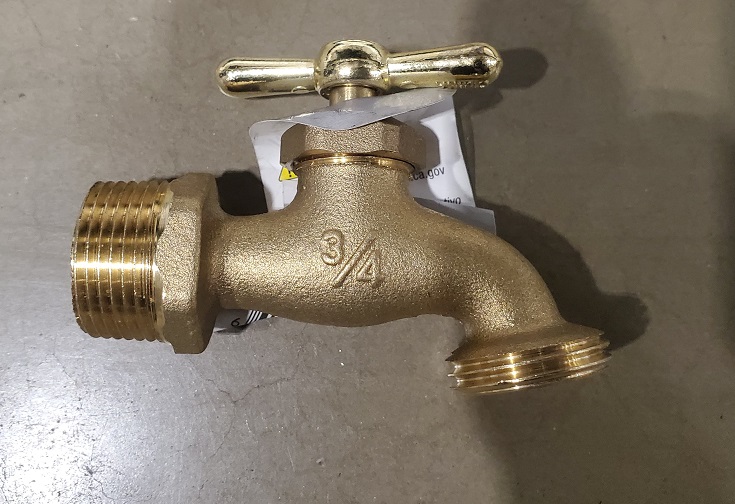 |
| Ball Valve Faucet | This fixture design is different from the basic compression valve faucet in that it uses a “ball” at the end of a stem that regulates the flow of water when the stem is turned 90 degrees. The ball has a hole machined through it that allows water to pass when in the “on” position. Ball valves generally have a handle that is in either the “on” position or the “off” position. Ball Valve fixtures are not as good at regulating the control of water flow through the fixture as you would have with compression valve fixtures. It is either “on” or “off” with very little adjustment to flow. If all you are looking for is water flow and you don’t want to turn the handle of a basic compression valve several times before you get flow, then ball valve fixtures are the way to go. | 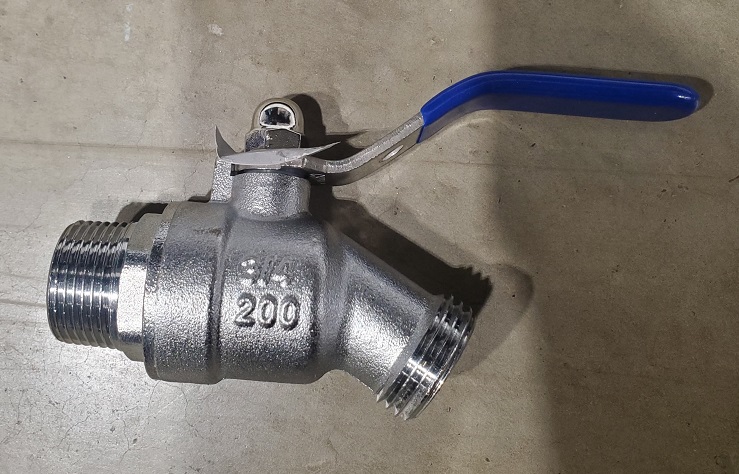 |
| Yard Hydrants | This fixture is used on larger properties where water requirements exist farther away from the house. Yard hydrants depend on a buried plumbing system below the ground which should be buried below the frost line (may be as deep as 4 feet or more in some areas). This option may be preferred over having extended lengths of hose running above ground over the property with the risk of being trampled by people, animals, or equipment. It could be used to irrigate lawns, gardens, wash equipment, and to water livestock that are farther away from the house. | 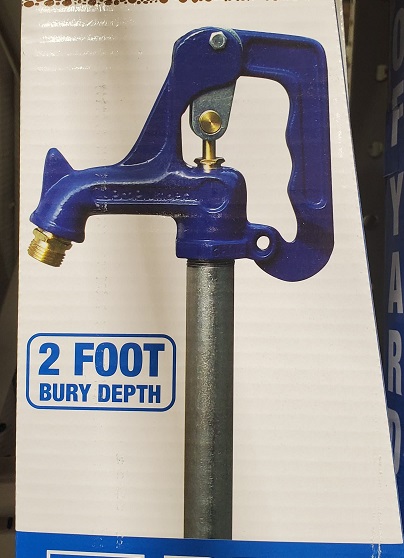 |
| Wall Hydrants | Wall hydrants provide a bit more security when it comes to accessing the water from the building. This fixture is mounted on the outside wall of the building. There is generally a valve handle inside the building that is turned on by somebody with access to the inside of the building, which needs to be turned on first before water can flow through the wall hydrant on the outside. There may or may not be a separate handle on the outside hydrant that can also regulate that flow of water once the inside handle is turned to the ‘on’ position. Wall hydrants sometimes require a key to access the outside handle and/or hose bib in order to operate it. They may also include frost-proof and anti-siphoning capabilities as mentioned below. | 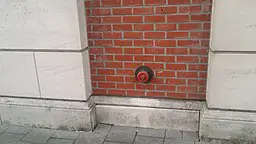 |
| Frost Proof Faucets / Hydrant | Frost proof faucets/hydrants are basically a compression valve faucet / spigot design, but the main difference is that the screw stem extends horizontally along an extra-long barrel through the insulated portion of the wall that it is attached to. This allows the rubber compression washer at the end of the screw stem to operate in an area that is behind the insulated portion of the wall that should never freeze. The lengths of these screw stem barrels can range between 4 to 24 inches to accommodate for various outside wall and foundation depths. In non frost-proof garden hose faucets, the water around the compression washer is expanding and contracting with the temperatures, which will potentially ruin the washer and seal. Also in non frost-proof faucets, if you attempted to open or close the faucet while it is still frozen, the washer could possibly be unseated or ripped apart, causing leak issues when the weather becomes warmer and the faucet thaws out. In these cases for non frost-proof faucets, the washers need replaced. | 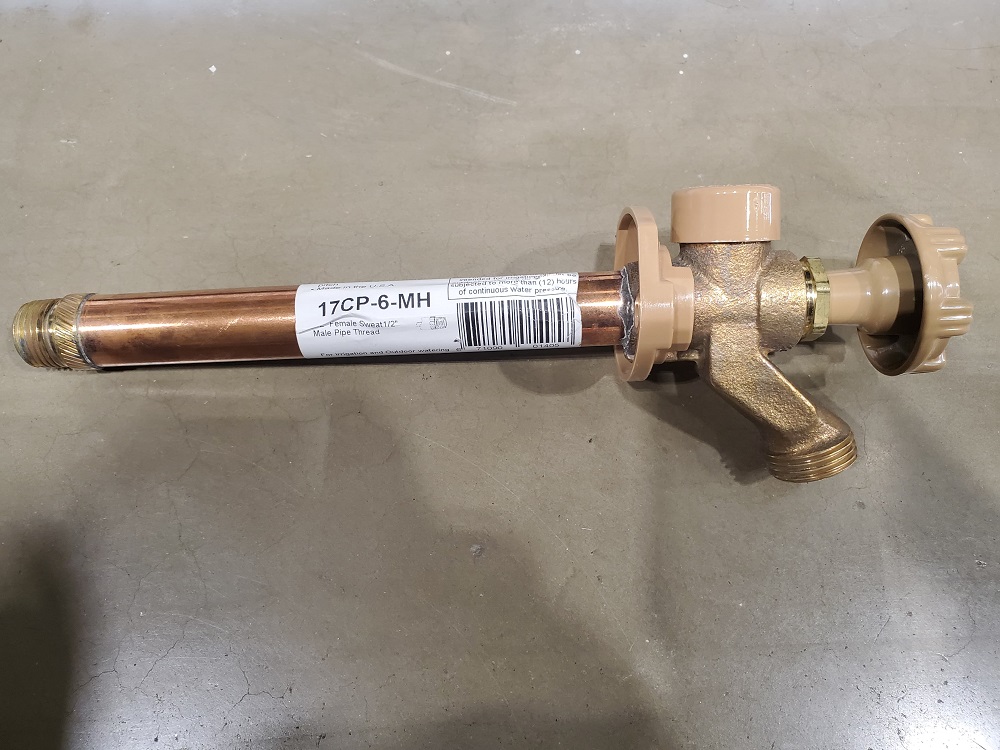 |
| Anti-Siphon Faucets | Anti-siphon faucets are seen on many basic compression valve faucet /spigot designs, and can also be included in combination with the frost-proof faucet feature. The anti-siphon feature on these fixtures prevents potentially contaminated water on the outside from getting back into the drinkable (potable) water supply of the house in the event that there is a change in the direction of water pressure. Some building codes require this feature on outdoor faucets / spigots to protect the drinking water supply being used in the building. You can tell if you have the an anti-siphon feature on your faucet if you see a round cap just behind the handle. They call these caps ‘Vacuum Breakers’. And no, this little cap is not another hose bib connection where you can connect another garden hose to. | 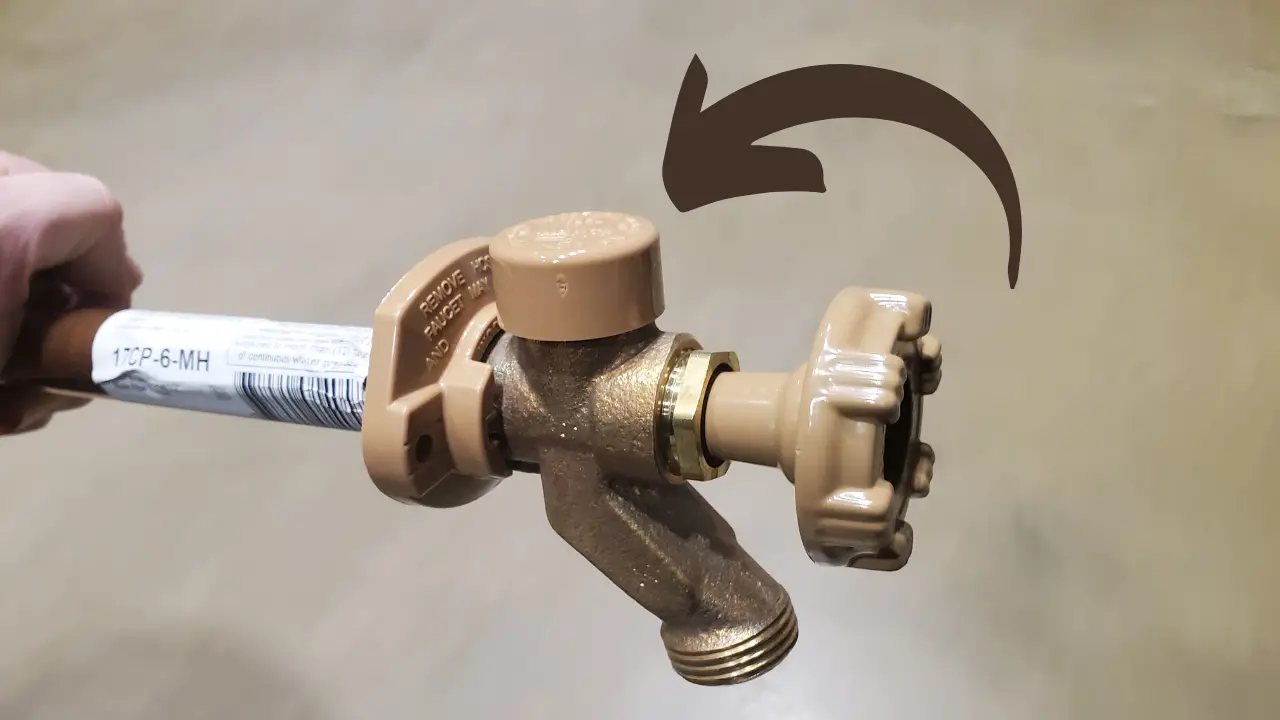 |
Garden Hose Faucet Handle Options
All faucet / spigots fixtures need something to turn in order to get water flowing through them. The following handle types are popular among the garden hose faucet / spigot fixtures mentioned above.
| HANDLE TYPE | HANDLE DESCRIPTION | Image |
| Round Wheel Handle | Round wheel handles are by far the most popular type of handle that you will see on outdoor garden hose faucet / spigot fixtures. They may be either metal or plastic. The round wheel handles are bigger when they come in the the plastic option for durability. | 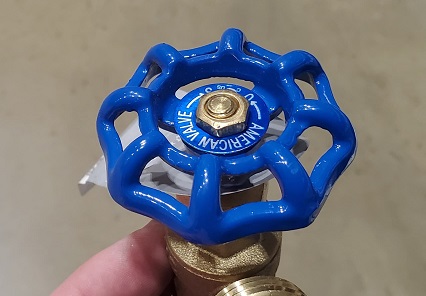 |
| Tee Handle | Tee handles are not as common as the round wheel handle, but are found on some faucet / spigot fixture designs. | 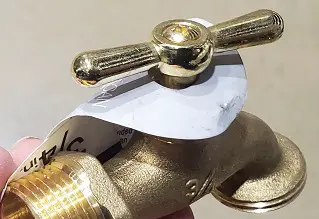 |
| Turn Hose Bibb Handle | Turn hose bibb handles are common with the use of ball-valve faucets / spigots. The handle is turned 90 degrees to indicate the ‘on’ or ‘off’ position. Generally, if the handle is pointed in the direction of the hose bib connecting to the garden hose, the flow is ‘on’. If the handle is pointed 90 degrees away from the hose bib connection, then the flow is ‘off’. | 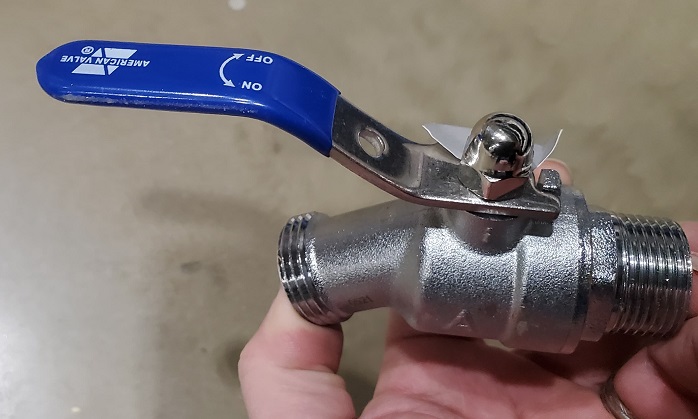 |
Garden Hose Bib Connectivity Options
Now that you are aware of the various garden hose faucet / spigot hose bib design options, you must consider how it all connects together. Like there are two sides to every coin, there are also two sides to every faucet / spigot hose bib. There is the end that connects to the house side and the end that connects to the garden hose side. There are also adapters of all kinds that help assist with connections at either end of the faucet / spigot hose bib.
Garden Hose Faucet / Spigot Hose Bib Connections on the House Side
The interior water pipe diameters that run through your house will generally come in two sizes: 1/2 inch and 3/4 inch sizes. These sizes refer to the diameter of the water pipe itself that will feed the outdoor garden hose faucet / spigot hose bib. This side of the faucet / spigot hose bib has no threads, does not get screwed in, but is the side that gets soldered in place to the existing pipes that supply water.
You will want to find a faucet / spigot hose bib that matches the pipe size in your house that it will be connecting to. This is also a job performed generally by a plumber. If performing this task yourself, be sure to cut the flow of water to the area by the shut-off valve before beginning any work. Depending on the home, some shut-off valves are located inside the house in a general location to the outdoor faucet / spigot hose bib fixture.
Garden Hose Faucet / Spigot Hose Bib Connections on the Garden Hose Side
The standard diameter size of a garden hose comes in 1/2, 5/8, and 3/4 -inch diameters. The 1/2-inch garden hose diameters are not as common, but are practical where watering requirements for gardening is minimal (e.g., apartment balconies or smaller condominium gardens). The 5/8-inch garden hose diameters are most widely used to meet the water requirements around the typical household (e.g., gardening, washing the car, watering the lawn). The 3/4-inch diameter garden hoses are mostly used by commercial/professionals or used where there are greater watering requirements that go beyond the typical garden (e.g., farm use, filling water troughs for livestock, washing large equipment).
The garden hose side of a faucet / spigot hose bib connection is generally a male Garden Hose Thread (GHT) connection with a 11.5 threads per inch. In 1963, the standard was part of the “Standard for Fire Hose Connections” as defined by the National Fire Protection Association (NFPA) then becoming adopted by the American Society of Mechanical Engineers (ASME) in their standard publication for hose coupling screw threads.
Garden Hose Faucet Adapters / Fittings / Connectors / Couplers
There are many types of bits and bobs that can be connected to either the house side or the garden hose side of a faucet / spigot hose bib. IT guys may refer to them as ‘adapters‘, plumbers may call them ‘fittings‘, or the average person might just go with ‘connectors‘. We could even throw in the word ‘couplers‘ for the rail fan folks.
At the end of the day, adapter fittings help connect the house to the faucet / spigot hose bib, and the faucet / spigot hose bib to the garden hose regardless of pipe or connection size of the devices involved. Adapters can be used to ‘connect’ any two devices together as long as they adhere to the standard Garden Host Thread (GHT) connection conventions for those devices.
When it comes to adapters, the average concern will be connecting the garden hose to the garden hose side of the faucet / spigot hose bib. For example, you might have a 3/4 faucet / spigot hose bib, but a 5/8 inch garden hose to connect to. Instead of going to the store to buy a brand new 3/4 inch hose, you can just go to the store to buy an adapter that will enable you to connect your existing 5/8 inch hose to a 3/4 inch faucet / spigot hose bib.
Using the right adapters to adapt to the the situation can save some both time and money versus replacing entire faucet / spigot hose bibs or garden hoses.
Each adapter has two ends and come in a number of combinations including male/female, male/male, female/female, male/quick connect, or female/quick connect. (Note: quick connect adapters are used to make connections that require repeated connections or disconnections. These will ‘snap’ into place versus being screwed in). Each end of the adapter may be the same size, or different size depending on the connection you are attempting to make between the garden hose and the faucet / spigot hose bib.
Attaching the Garden Hose: Tips and Tools
Here are some points to consider when attaching the garden hose:
- Attaching the garden hose requires either a direct attachment to the faucet / spigot hose bib or to an adapter that will connect to the faucet / spigot hose bib.
- The male end of a connection will have the threads on the outside, whereas the female end of a connection will have the threads on the inside.
- Use an adjustable wrench to tighten or remove the garden hose from either the adapter or faucet / spigot hose bib connection. Tightening only by hand may cause the connection to leak as it may not be tight enough to make the seal. In those cases where an adapter is being used, you might consider using a second adjustable wrench to stabilize the connection while it is being turned.
- You may use Teflon threaded tape aka ‘plumbers tape’ on the male end of the connection if you determine that the threads may be slightly damaged causing leaks when connected. Otherwise, you may need to replace the rubber gasket within the connector to prevent the leaks in the future.
- Remember this phrase when tightening or loosening garden hose connections : “Lefty-Loosey, Righty-Tighty”. As simple as it is, sometimes we just need to remind ourselves to ensure everything is turning in the right direction.
- Remember to disconnect your garden hose before the first-frost as you do not need the expanding ice to damage the hose, hose attachments, or the faucet / spigot hose bib during the winter months.
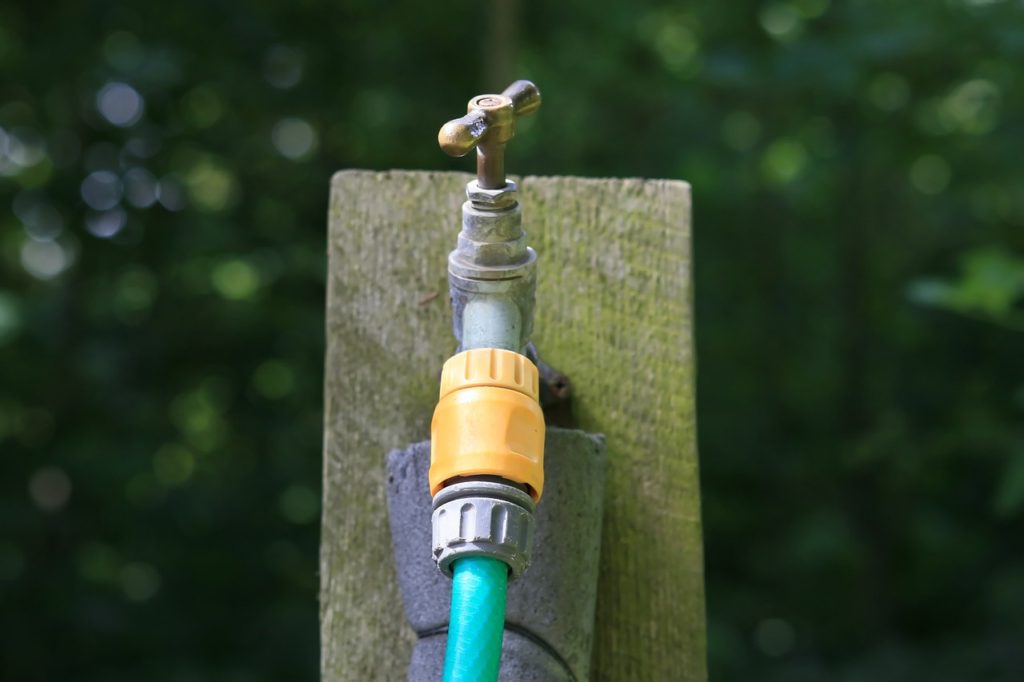
Final Thoughts
As much as The Grow Monster would like to depend on rain to water the garden, we still require the use of a garden hose to do so. We certainly don’t have the time and patience to use a watering can, especially in the heat of summer. In this post, we explored some of the garden hose faucet / spigot hose bib options to consider along with connectivity and adapter options. Knowing what our options are with connecting the garden hose is half the battle, and getting it all actually connected is the other half.
We, at The Grow Monster, have had our fair share of raised garden bed experiences…
Like yourself, The Grow Monster has often asked why is it difficult to grow things…
Whether it is business or gardening, it is important to let certain questions drive the…
Hydrangeas are a great accent shrub and can also be a good focal point in…
Picture it, you’re walking or driving through the neighborhood and suddenly you see from afar…
The Grow Monster knows that sometimes you need to get water from one point in…

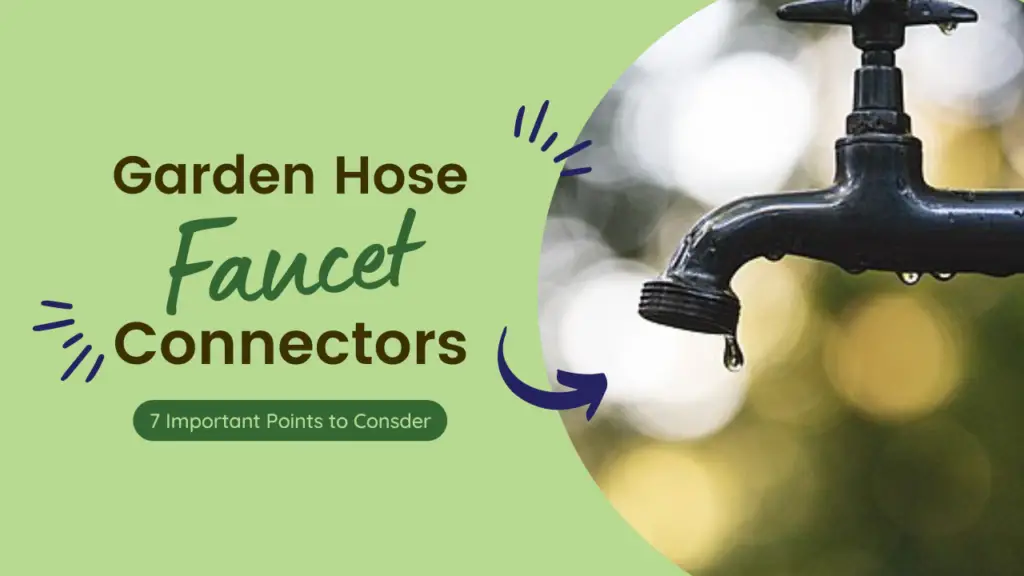
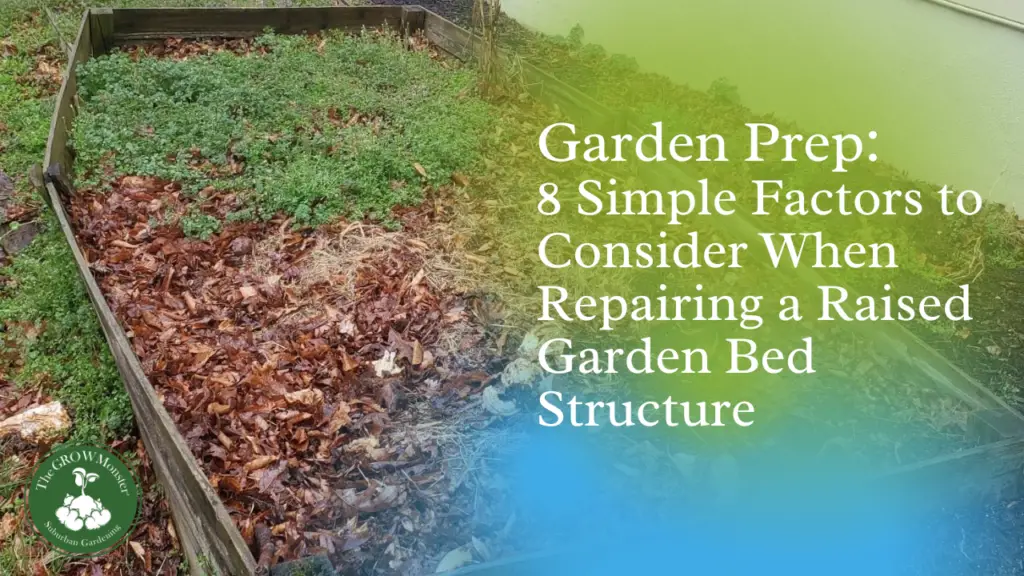
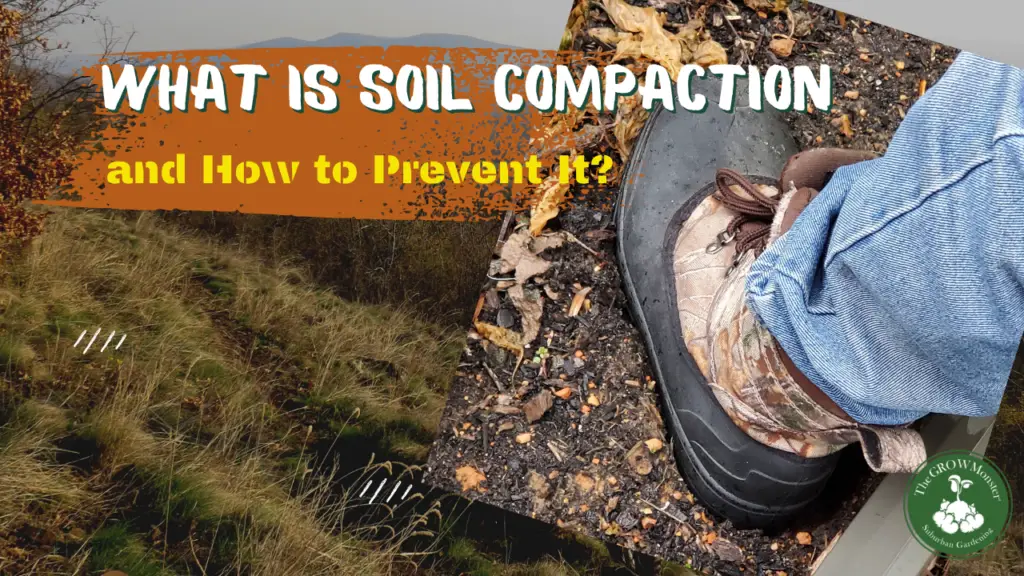
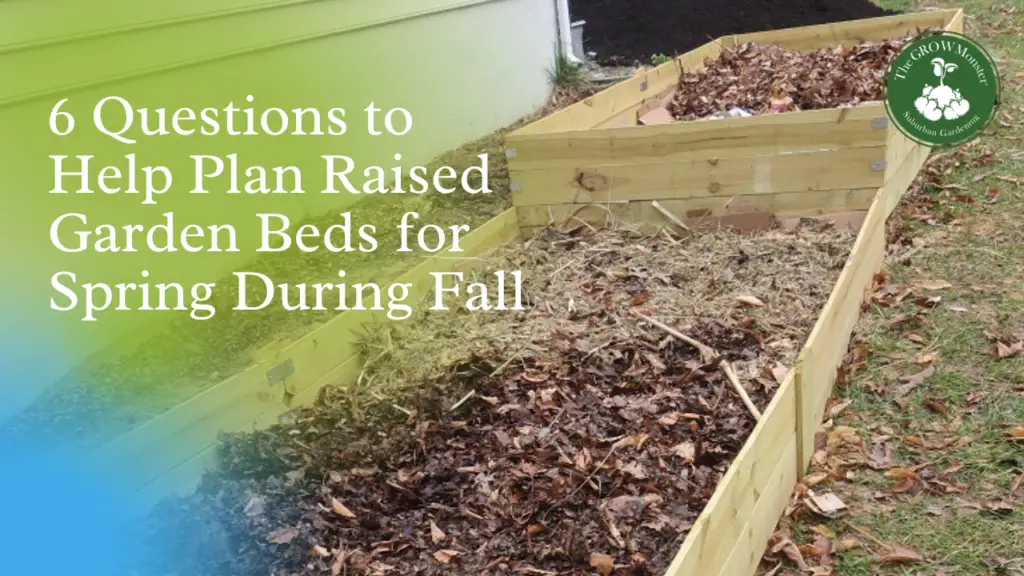
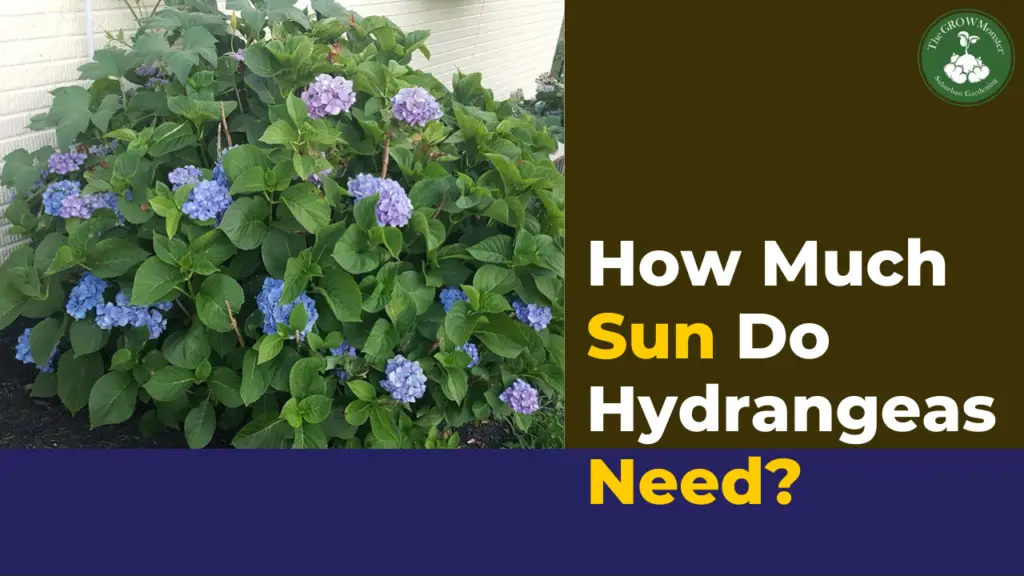
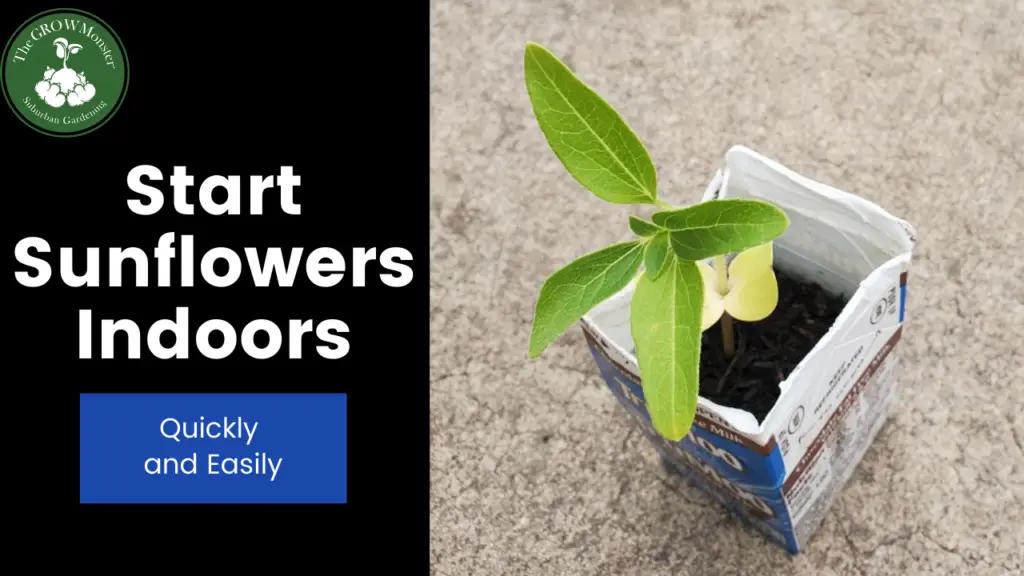
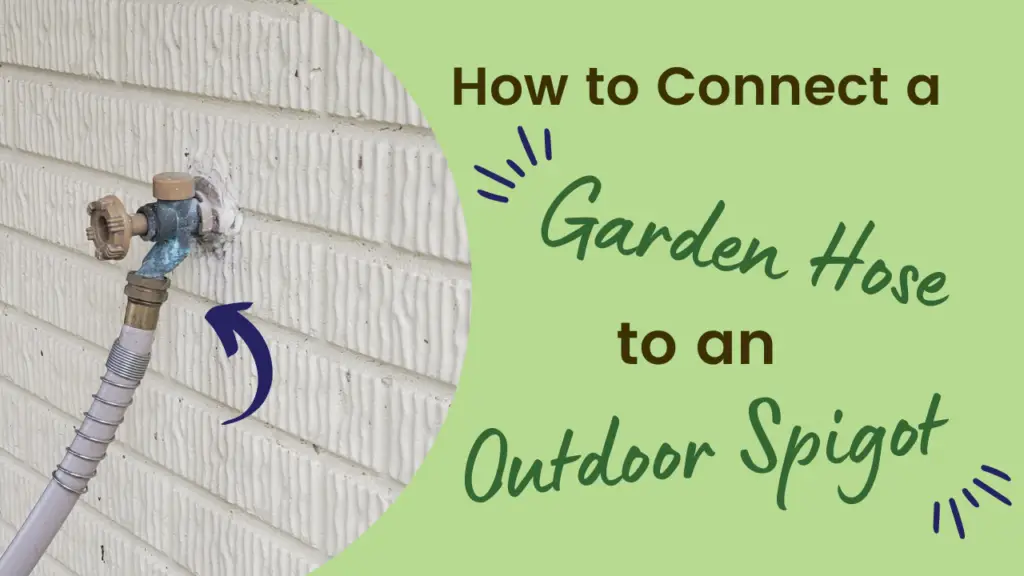

Pingback: How to Connect a Garden Hose to An Outdoor Spigot? - The Grow Monster